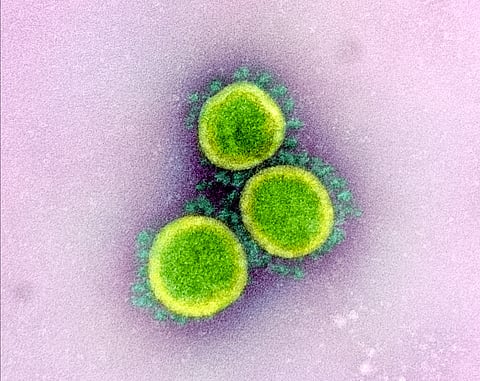Opinion: Racializing the Coronavirus
Why Trump's description of it as the "China" virus validates racial hatred.
by Sam Louie, LMHC, S-PSB
(This article was originally published in Psychology Today and has been reprinted with permission)
This past week, President Trump doubleddownon his description of the coronavirus by callingit the "Chinese" virus for two daysat the White House coronavirus task force's daily news briefing. Trump defendedthe term by saying, "It's not racist at all. No, not at all. It comes from China, that's why. It comes from China. I want to be accurate."
As an Asian-American psychotherapist and workshop facilitator on multicultural issues, what Trump may not understand is that his terminology is indirectly blaming the virus on the Chinese by targeting its geographic and cultural origin. It puts a face, a culture, and a country as the ones to blame for this pandemic.
It can be considered racist in the sense that it racializes the disease and negatively implicates the Chinese people and the larger Asian global community at large. Yes, it started in China, but by calling it the "Chinese" virus he is perpetuating fear, hatred, and in some cases, violence against Chinese and Asians worldwide, as non-Asians are not in the habit ofdiscerning Asian ethnic differences.
His verbal condemnation and blaming of China for this virus reinforces a larger issue many communities of color face in the U.S., which is that of "white fragility," a term coined by sociologist Dr. Robin DiAngelo. This is highlighted with his comment of "it's not racist" and the inability to hear how the Asian community feels about the impact this has on them.
This is no different than when a Black or Latinx person would like to give feedback to a white colleague that his or her language, comments, or jokes are inappropriate, but instead of showcasing cultural humility, oftentimes the white individual will get upset and become even more defensive by stating comments such as:
- "He/She is playing the race card."
- "It wasn't intended to be racist."
- "I don't see it that way."
- "I'll be the judge of whether it was racist or not."
- "I disagree."
- "It was a harmless/innocent comment."
- "You're overreacting" or "You're taking this too seriously."
Trump's defense is his belief that "it's not racist." It may not be racist in the conventional sense of burning a cross on the lawn of a Black homeowner or yelling racist epithets at people, but it's still racist in the sense that it indirectly reminds Chinese and other people of color that the White majority gets to decide what is or isn't racist. The comment itself comes from Trump, who comes from the dominant culture that can make that blanket decision based on institutional power, privilege, and protection.
Whilelevel-headed WhiteAmericans may ignore Trump's comments, what's often lost in these discussions aboutindividual acts of racism are the pernicious and invisible systemic and institutional powers that continue to promote, disseminate, and keep White Americans in a place of racial leverage against their fellow Americans of color.
Sam Louie is a therapist in Seattle who specializes in multicultural issues and sexual compulsivity.
Featured image "Novel Coronavirus SARS-CoV-2" by National Institute of Allergy and Infectious Diseases (NIAID) licensed CC BY.
Help keep BIPOC-led, community-powered journalism free — become a Rainmaker today.


